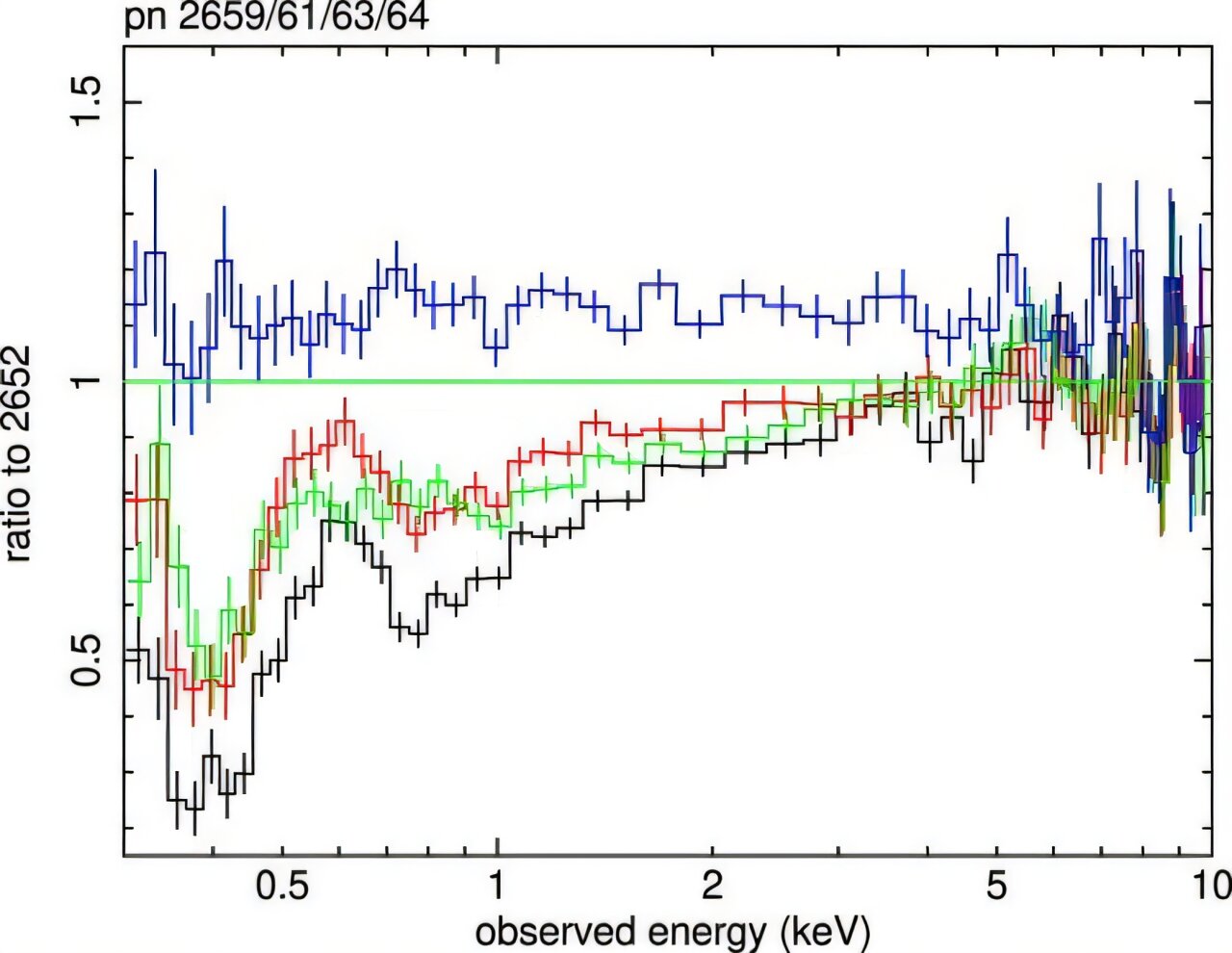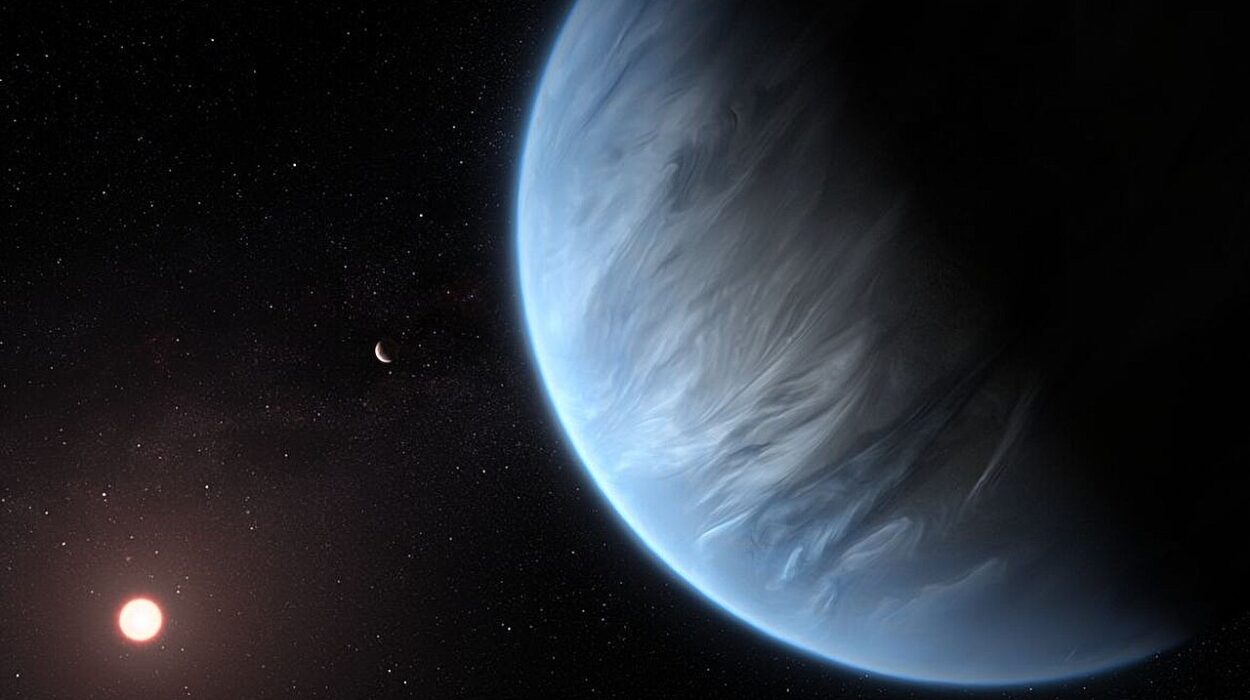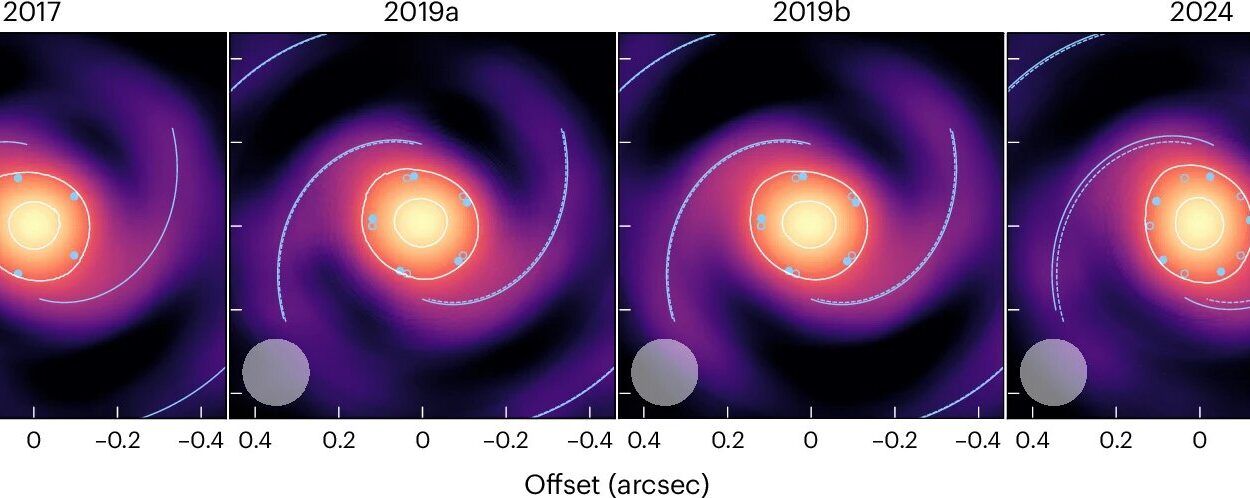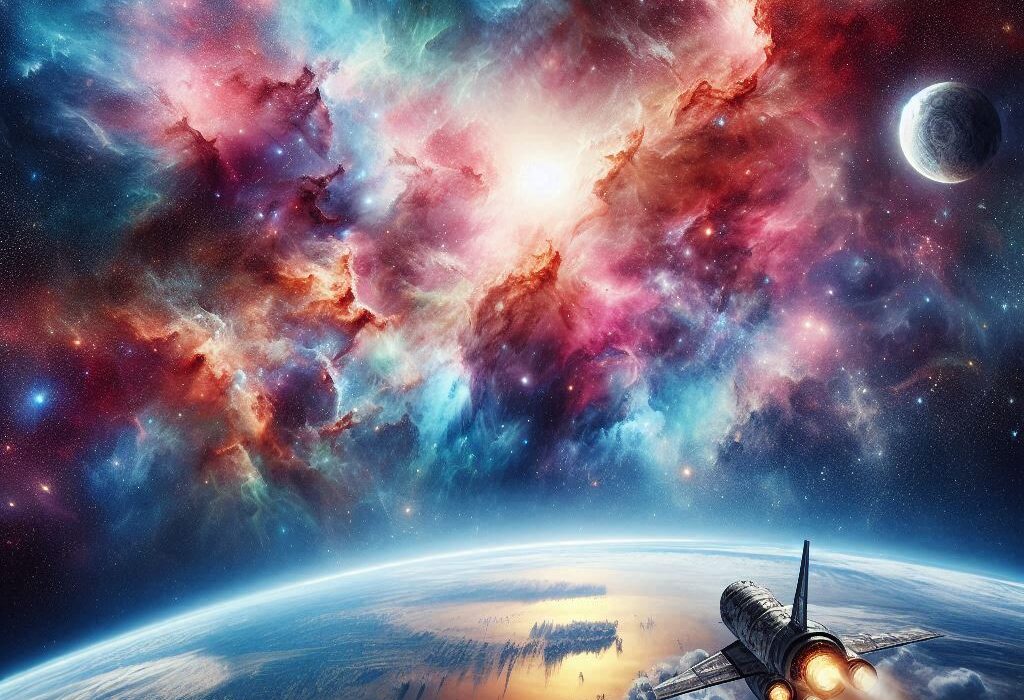Deep in the heart of a galaxy 1.2 billion light-years away, something extraordinary happened. A supermassive black hole—already millions to billions of times the mass of our Sun—gorged itself on a cosmic feast. The meal was so enormous and so rapid that the black hole couldn’t hold it all in. Just days later, it coughed up the excess in a colossal blast of matter, expelled at nearly a third of the speed of light.
That’s the startling conclusion of a new study by researchers at the University of Leicester, recently published in the Monthly Notices of the Royal Astronomical Society. It offers a rare glimpse into the feeding habits of one of the universe’s most mysterious and powerful entities—and the turbulent winds that follow.
“We’re essentially watching a black hole grow in real time,” said Professor Ken Pounds, lead author of the study and a veteran of X-ray astronomy. “This is the most compelling evidence yet of how a sudden inflow of matter can lead to an explosive outflow, shedding light—ironically—on one of the darkest objects in the universe.”
A Galactic Gasp from PG1211+143
The cosmic drama unfolded in the Seyfert galaxy PG1211+143, a well-studied active galactic nucleus, or AGN, that has long fascinated astronomers. Located roughly 1.2 billion light-years from Earth, it houses a central supermassive black hole (SMBH) that radiates intensely as it devours surrounding matter—a hallmark of AGNs.
Using data from the European Space Agency’s XMM-Newton X-ray Observatory, University of Leicester scientists monitored the black hole over a five-week campaign in 2014. Their observations revealed an enormous inflow of material—equivalent to at least ten times the mass of Earth—falling toward the event horizon. But this wasn’t the end of the story.
Within days, astronomers detected something astonishing: a massive outflow of superheated gas, hurled outward at 0.27 times the speed of light—more than 80,000 kilometers per second. For context, that’s fast enough to circle the Earth in less than half a second.
This wind of ionized gas wasn’t just fast—it was powerful. And, as the researchers concluded, it wasn’t random.
“The timing and intensity of the outflow match exactly what we’d expect if the inflowing matter had overloaded the black hole’s accretion process,” said Pounds. “Radiation pressure from the intense energy released as the gas spiraled inward forced the excess outward in a violent expulsion.”
How to Fatten—and Then Frustrate—a Black Hole
Black holes are notorious for their appetite. They grow by pulling in gas, dust, and even stars that venture too close, feeding from swirling disks of matter that form just outside their event horizons. As this matter spirals inward, friction heats it to extreme temperatures, releasing X-rays and other high-energy radiation.
In this case, that very radiation became a kind of pressure valve.
According to the study, as matter piled up in a dense ring around the SMBH, it became superheated—reaching millions of degrees. The intense gravitational energy released in the process was converted into radiation. But instead of allowing more matter to fall in, that radiation exerted an outward force, blowing the extra material away in what the researchers call a “relativistic wind.”
It’s like overfilling a funnel. Instead of smoothly flowing into the center, some of the material splashes out violently from the sides.
This outflow, blazing away from the black hole at nearly a third of light speed, not only reveals the limits of cosmic gluttony—it also shows how black holes regulate themselves. The findings suggest that sudden infall of material doesn’t lead to unchecked growth, but instead sparks an almost immediate reaction that shapes the fate of the surrounding galaxy.
The Wind That Stunts a Galaxy
This is more than just a black hole burping after a heavy meal. These ultra-fast outflows, or UFOs as astronomers sometimes call them, have far-reaching effects.
Previous studies—many also led by Leicester astronomers—have shown that such winds can sweep across entire galaxies, disrupting star formation by blowing away the gas clouds from which stars are born. In essence, the black hole’s violent outburst can halt the growth of the galaxy itself.
Back in 2001, the same team first detected such a wind in PG1211+143, moving at 15% the speed of light. At the time, it was a shocking discovery, but later research showed these winds are common in luminous AGNs across the cosmos. The 2014 observation now connects the dots: the cause (a massive inflow), the effect (a gravitationally triggered outflow), and the consequences (a galaxy potentially reshaped by its core).
A Tale Told in X-rays and Ultraviolet Light
To catch this event in action, astronomers relied heavily on ESA’s XMM-Newton, a space-based observatory launched in 1999 that has been crucial in studying X-ray sources across the universe.
The study also benefited from complementary observations from NASA’s Neil Gehrels Swift Observatory, which provided ultraviolet light data that helped scientists understand the broader environment around the black hole. The University of Leicester hosts the UK Swift Science Data Center, making it a central hub for monitoring SMBH activity.
“The availability of simultaneous ultraviolet fluxes from Swift was essential,” said Pounds. “Together with the X-ray data, it allowed us to trace how material moved, heated, and ultimately escaped the gravitational grip of the black hole.”
A Window into the Heart of the Cosmos
Supermassive black holes are among the most enigmatic objects in the universe. They hide at the center of galaxies, including our own Milky Way, and influence the birth, evolution, and death of stars and planets. Yet despite their central role in cosmic history, watching one actively grow is rare.
This study offers something close to that—a moment-by-moment chronicle of how a supermassive black hole eats, digests, and then regulates itself through radiation and outflow.
“This is what makes astronomy so thrilling,” said Pounds. “With the right tools and timing, we can witness cosmic events that play out over millions of years—captured in just a few weeks of observation.”
What Comes Next?
The Leicester team hopes to continue monitoring PG1211+143 and similar galaxies, looking for other episodes of feeding and feedback. Each such event brings us closer to understanding not just how black holes evolve, but how they sculpt the universe around them.
As observatories like XMM-Newton and Swift continue their watch—and as new instruments come online in the coming decades—astronomers may soon be able to track these cosmic rhythms with even greater clarity.
Because somewhere, in the silent depths of space, a black hole is always hungry. And sometimes, when it eats too much, the entire universe hears it scream.
Reference: Ken Pounds et al, Observing the launch of an Eddington wind in the luminous Seyfert galaxy PG1211+143, Monthly Notices of the Royal Astronomical Society (2025). DOI: 10.1093/mnras/staf637






